A methodology for exploring biomarker--phenotype associations: application to flow cytometry data and systemic sclerosis clinical manifestations
- PMID: 26373409
- PMCID: PMC4571079
- DOI: 10.1186/s12859-015-0722-x
A methodology for exploring biomarker--phenotype associations: application to flow cytometry data and systemic sclerosis clinical manifestations
Abstract
Background: This work seeks to develop a methodology for identifying reliable biomarkers of disease activity, progression and outcome through the identification of significant associations between high-throughput flow cytometry (FC) data and interstitial lung disease (ILD) - a systemic sclerosis (SSc, or scleroderma) clinical phenotype which is the leading cause of morbidity and mortality in SSc. A specific aim of the work involves developing a clinically useful screening tool that could yield accurate assessments of disease state such as the risk or presence of SSc-ILD, the activity of lung involvement and the likelihood to respond to therapeutic intervention. Ultimately this instrument could facilitate a refined stratification of SSc patients into clinically relevant subsets at the time of diagnosis and subsequently during the course of the disease and thus help in preventing bad outcomes from disease progression or unnecessary treatment side effects. The methods utilized in the work involve: (1) clinical and peripheral blood flow cytometry data (Immune Response In Scleroderma, IRIS) from consented patients followed at the Johns Hopkins Scleroderma Center. (2) machine learning (Conditional Random Forests - CRF) coupled with Gene Set Enrichment Analysis (GSEA) to identify subsets of FC variables that are highly effective in classifying ILD patients; and (3) stochastic simulation to design, train and validate ILD risk screening tools.
Results: Our hybrid analysis approach (CRF-GSEA) proved successful in predicting SSc patient ILD status with a high degree of success (>82% correct classification in validation; 79 patients in the training data set, 40 patients in the validation data set).
Conclusions: IRIS flow cytometry data provides useful information in assessing the ILD status of SSc patients. Our new approach combining Conditional Random Forests and Gene Set Enrichment Analysis was successful in identifying a subset of flow cytometry variables to create a screening tool that proved effective in correctly identifying ILD patients in the training and validation data sets. From a somewhat broader perspective, the identification of subsets of flow cytometry variables that exhibit coordinated movement (i.e., multi-variable up or down regulation) may lead to insights into possible effector pathways and thereby improve the state of knowledge of systemic sclerosis pathogenesis.
Figures
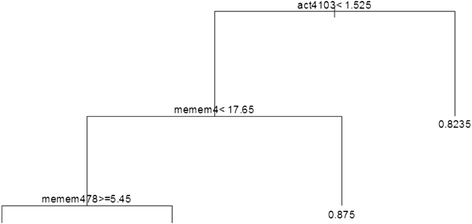
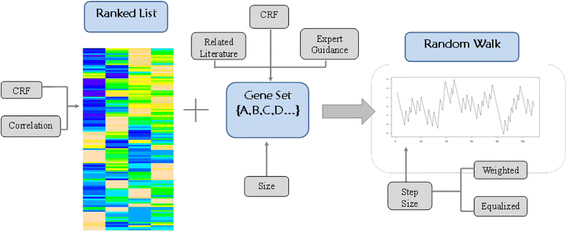
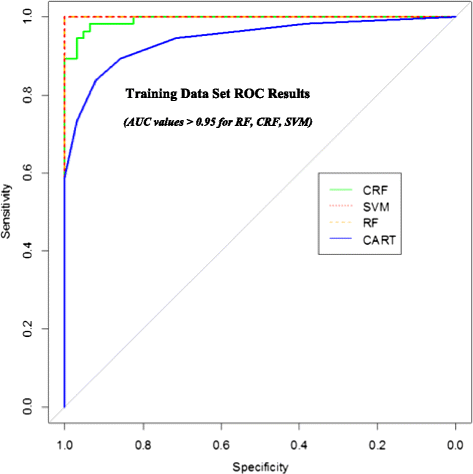
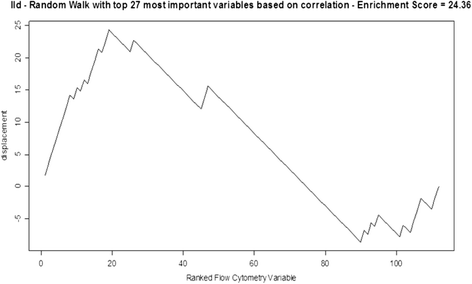
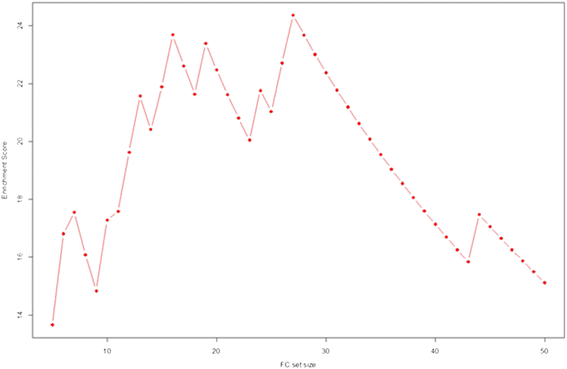
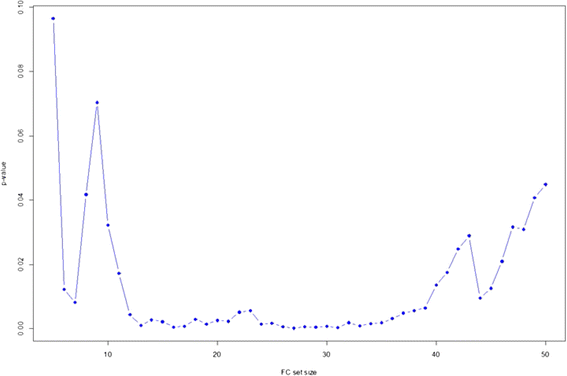
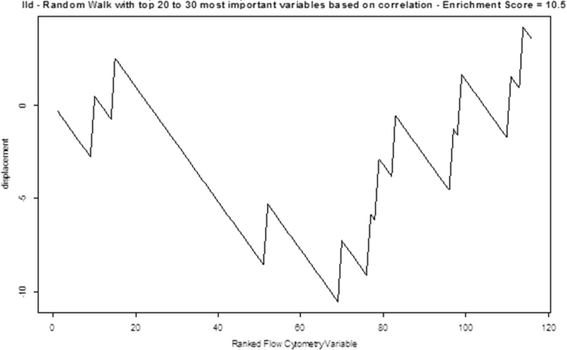
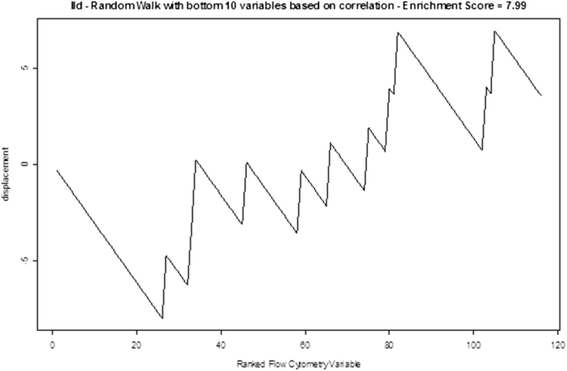
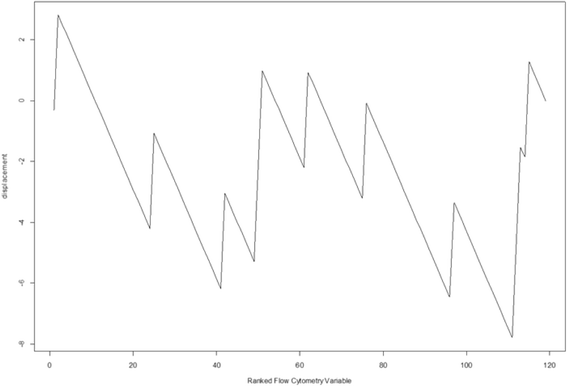
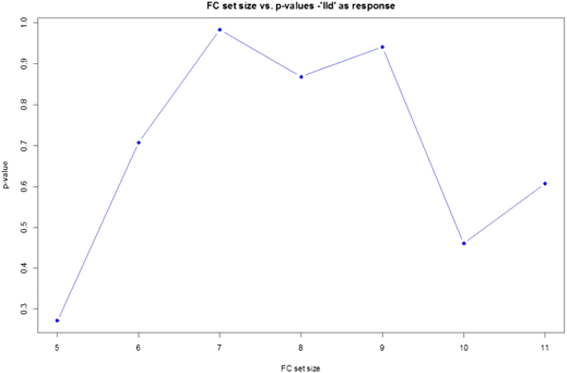
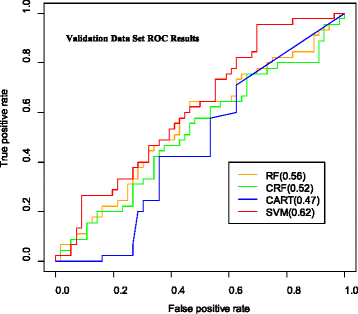
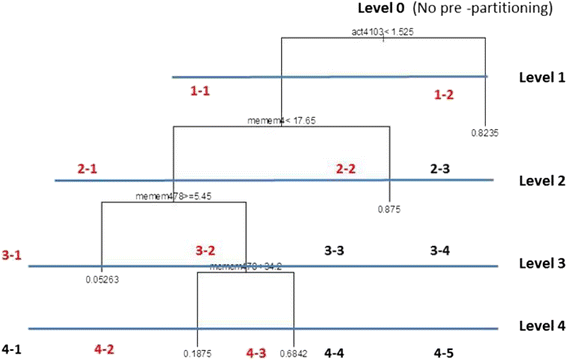
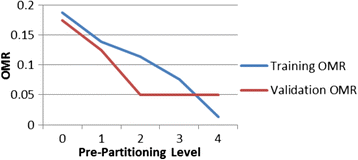
Similar articles
-
A circulating cell population showing both M1 and M2 monocyte/macrophage surface markers characterizes systemic sclerosis patients with lung involvement.Respir Res. 2018 Sep 24;19(1):186. doi: 10.1186/s12931-018-0891-z. Respir Res. 2018. PMID: 30249259 Free PMC article.
-
Interstitial Lung Disease in Patients With Systemic Sclerosis: Toward Personalized-Medicine-Based Prediction and Drug Screening Models of Systemic Sclerosis-Related Interstitial Lung Disease (SSc-ILD).Front Immunol. 2020 Sep 4;11:1990. doi: 10.3389/fimmu.2020.01990. eCollection 2020. Front Immunol. 2020. PMID: 33013852 Free PMC article. Review.
-
Detection and classification of systemic sclerosis-related interstitial lung disease: a review.Curr Opin Rheumatol. 2019 Nov;31(6):553-560. doi: 10.1097/BOR.0000000000000660. Curr Opin Rheumatol. 2019. PMID: 31415029 Free PMC article. Review.
-
Registry of the Spanish network for systemic sclerosis: clinical pattern according to cutaneous subsets and immunological status.Semin Arthritis Rheum. 2012 Jun;41(6):789-800. doi: 10.1016/j.semarthrit.2011.10.004. Epub 2011 Dec 12. Semin Arthritis Rheum. 2012. PMID: 22169458
-
Elevated serum Krebs von den Lungen-6 in systemic sclerosis: a marker of lung fibrosis and severity of the disease.Rheumatol Int. 2018 May;38(5):813-819. doi: 10.1007/s00296-018-3987-3. Epub 2018 Feb 17. Rheumatol Int. 2018. PMID: 29455320
Cited by
-
A Machine Learning Application to Predict Early Lung Involvement in Scleroderma: A Feasibility Evaluation.Diagnostics (Basel). 2021 Oct 12;11(10):1880. doi: 10.3390/diagnostics11101880. Diagnostics (Basel). 2021. PMID: 34679580 Free PMC article.
-
The parameter sensitivity of random forests.BMC Bioinformatics. 2016 Sep 1;17(1):331. doi: 10.1186/s12859-016-1228-x. BMC Bioinformatics. 2016. PMID: 27586051 Free PMC article.
-
A systematic review of the applications of artificial intelligence and machine learning in autoimmune diseases.NPJ Digit Med. 2020 Mar 9;3:30. doi: 10.1038/s41746-020-0229-3. eCollection 2020. NPJ Digit Med. 2020. PMID: 32195365 Free PMC article. Review.
-
Biomarkers in the Pathogenesis, Diagnosis, and Treatment of Systemic Sclerosis.J Inflamm Res. 2023 Oct 17;16:4633-4660. doi: 10.2147/JIR.S379815. eCollection 2023. J Inflamm Res. 2023. PMID: 37868834 Free PMC article. Review.
-
Clinical and Molecular Phenotyping in Scleromyxedema Pretreatment and Posttreatment With Intravenous Immunoglobulin.Arthritis Care Res (Hoboken). 2020 Jun;72(6):761-767. doi: 10.1002/acr.23908. Epub 2020 May 14. Arthritis Care Res (Hoboken). 2020. PMID: 31008568 Free PMC article.
References
-
- Winstone TA, Assayag D, Wilcox PG, Dunne JV, Hague CJ, Leipsic J, Collard HR, CJ. Ryerson: Predictors of mortality and progression in scleroderma-associated interstitial lung disease: A systematic review. Chest, 2014 - PubMed
-
- Roth MD, Tseng CH, Clements PJ, Furst DE, Tashkin DP, Goldin JG, Khanna D, Kleerup EC, Li N, Elashoff D, Elashoff RM, G. Scleroderma Lung Study Research Predicting treatment outcomes and responder subsets in scleroderma-related interstitial lung disease. Arthritis Rheum. 2011;63(9):2797–808. doi: 10.1002/art.30438. - DOI - PMC - PubMed
Publication types
MeSH terms
Substances
LinkOut - more resources
Full Text Sources
Other Literature Sources
Medical
Research Materials

